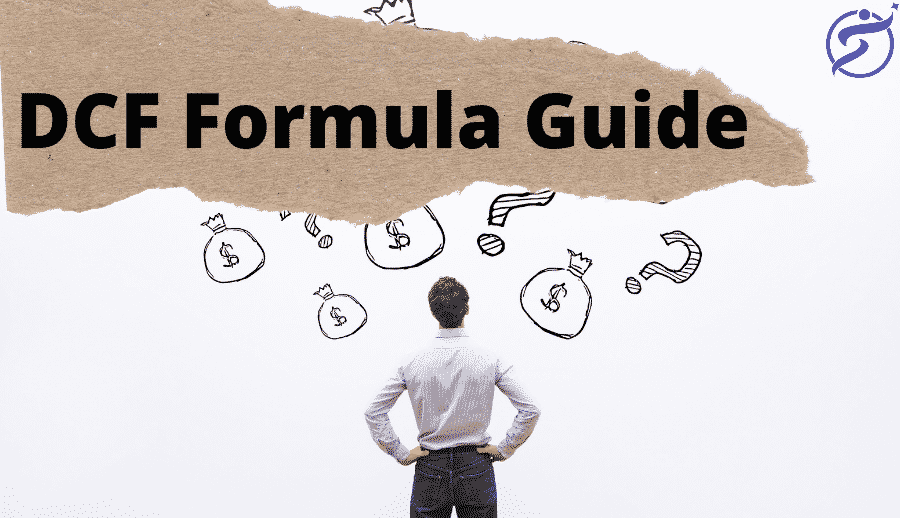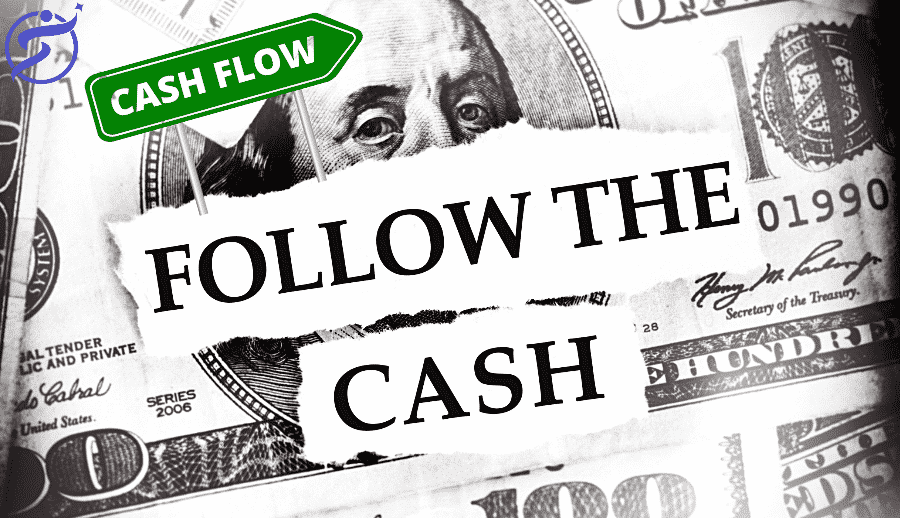Discounted Cash Flow Formula: What It Is And How To Use It
 SCFO
SCFO- Jul 21, 2021
- SMEs
As we have already discussed various methods for company valuation, now, the Discounted Cash Flow formula, or DCF formula, is one of them.
The formula is a forecast of free cash flow in a company or more specifically “FCF” in short. The cash flow formula can be applied to all businesses. Companies can use discounted cash flow techniques as a tool for measuring their asset value.
The term “discounted cash flow” refers to a method commonly employed by investors or valuation experts. This method is used to determine the value of a business by estimating the future cash flow value of the business.
The formula projects the business strength of how a business will perform in the future, and then based on that ratio it’ll show you the value of how much money it will generate in the future.
The DCF Formula, a time-tested method, helps determine the value of your business or technology startup. Even if you are going to invest in a stock, this is the method you will use.
It’s an equation, and furthermore, it’ll take you about 10 minutes to learn and understand.
Discounted Cash Flow Formula (DCF) Guide

Discounted cash flow is an investment valuation technique based on estimating the value of an investment in today’s dollars. The DCF Formula is a popular way to find out the value of an investment or a business.
For growth and for future business opportunities, valuing your business is a smart decision. When you evaluate your business, you know what your business potential is and where you are.
If you are someone going to invest in a business, you’d be pleased to make a better decision. Isn’t that great?! When you know how your investment will serve you as per the business prospectus.
Discounted cash flow meaning could be well defined in professional language, based on its usefulness, I’d call it problem-solving valuation approach. Let’s talk about what exactly Discounted cash flow meaning is. Keep scrolling…
What is the Discounted Cash Flow Formula?

As we all know by now discounted Cash Flow is a technique that tells you how much money you can spend today in order to get the desired return in the future.
It’s an estimate of how much cash you will receive from the business, as determined by the present value of all future cash flows. DCF is like the calculator you’ve had at school for the past decade but in a business context”.
When you understand this, you don’t have to have a business or financial degree to make smart investment decisions, whether you are going to invest in a startup, buying a company, or opening a new manufacturing unit, etc. However, you need a more professional approach for serious investment or business.
We calculate the discounted cash flow formula based on future free cash flow, enabling us to analyze the enterprise value.
Future free cash flow is discounted future cash flow discounted at the capital structure interest rate.
That is, future free cash flow is the sum of operating cash flows discounted at the capital structure interest rate and capital expenditures discounted at a weighted average cost of capital (WACC).
For small businesses, you would typically discount future cash flow by 50% and thus, future free cash flow is 50% less than the value of operating cash flows (e.g., debt repayment and new investment returns).
How the DCF Method Works
Discounted cash flow method analyzed your projected cash flows to determine what your asset will be worth in the future. If the price of the stock rises or falls, then the present value of future cash flows will go up or down, thus determining the value of the company.
The company has to have growth, and future cash flow to estimate the value.
When you are calculating the investment or for the business purpose, think like this scenario; You have a car showroom,
How many cars are you going to sell in the next 3 years?
What’s the revenue of your company in the next year?
What is the growth potential of your business?
Now, what is the future cash flow that you can expect in the next 5 years? Your business can generate INR 100 crores per year in revenue in 2018.
How much would you need to be paid each year, to obtain that same INR 100 crores in revenue?
Investors can make the decision whether the initial investment is worth it or not by finding the present value of future cash flow by DCF Formula with the use of a discounted rate.
The investment is considered good when the DCF value exceeds the current investment.
This is a difficult task to undertake, but it is not impossible. If you are an investor and decided to invest in a business or acquire a company. You’d probably want to know the worthiness of the investment you are going to make.
Alright, you can do this by estimating the ending value of the equipment, assets, all the investment, future cash flow. The investor will have to consider a discount rate for the Discounted Cash Flow Techniques.
The higher the risk profile of a company or investor, the higher their discount rate.
In case if you are not able to determine future cash flow, then you as an investor will have to rely on an alternative model for the valuation.
Please watch this short video and learn how to calculate discounted cash flow:
httpv://youtu.be/zAMKhwzARZ8
Example of Discounted Cash Flow Method
Discounted Cash Flow Formula:

Here;
CF stands for the Cash flow,
CF1 (1 is a single year),
CF2 (2 as two years),
CFn (n indicating for additional years), and
r= is the discount rate (WACC)
Let’s consider an example to grasp the concept of DCF. Imagine, as an investor, you plan to invest 2 Lakh over the next 5 years. In this scenario, the company has a 10% WACC (Weighted Average Cost of Capital).
The estimated cash flow for this company will be as follows:
| Years | Cash Flow of the company |
| 1 | 30000 |
| 2 | 42000 |
| 3 | 55000 |
| 4 | 68000 |
| 5 | 75000 |
Now, We’ll Calculate Discounted Cash flow in Order to Find its DCF Value:
DCF= [30,000/(1+0.1)1]+[42,000/(1+0.1)2]+[55000/(1+0.1)3]+[68000/(1+0.1)4]+[75000/(1+0.1)5]
By solving the above DCF Formula, we’ll obtain the DCF for each year, as shown in the table below.
| Years | Cash Flow of the Company | DCF |
| 1 | 30000 | 27272.73 |
| 2 | 42000 | 34710.75 |
| 3 | 55000 | 41322.31 |
| 4 | 68000 | 46444.91 |
| 5 | 75000 | 46569.1 |
When calculating all these 5 years of DCF values, the total DCF Values will be 196319.8.
We’ll get an NVP (Net present value) of INR 3680.2 by Subtracting the total DCF value from the initial investment. The NVP is a positive number. So, if you are investing INR 2 Lakh, you may receive good returns.
Also Read: Startup Valuation Methods
Businesses Using Discounted Cash Flows
Various companies use this method of valuing their business.
The ones that mostly use this method of valuing their business are banks, but even if it’s not the banks, companies using this method are usually used to find investment opportunities.
If the company shows good performance and is valued higher than its peers, then the business is probably good. Forward P/E ratio The forward P/E ratio meaning is also a good valuation tool.
This means you’re projecting the company’s earnings into the future. It’s a forward-looking valuation technique that assesses a company’s value based on its future earnings or earnings from the past. Consequently, this will provide you with a reliable estimate of the present value of the earnings.
Usually, a company’s profit and loss statement will show the cash flow generated by a business in a given period. By making an assumption of the future cash flows, it can help companies better calculate their value. Is value assessment using these methods accurate?
No. However, value assessment methods are no panacea. By using them, companies lose out on a number of ways to calculate their worth.
The calculation method and how to calculate it are essential aspects. Moreover, investors hold valuation methods in high regard.
However, not all of these methods are always that accurate. Additionally, they tend to be partial and rely on assumptions.

